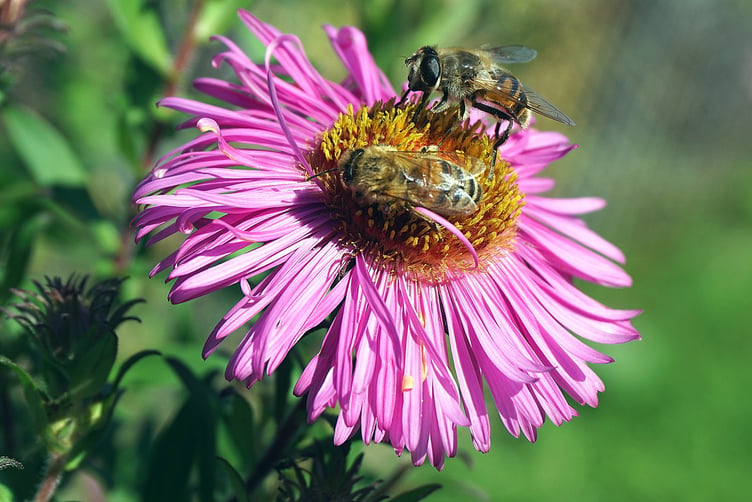Summer should be a time when we see lots of pollinators in our gardens, being among the peak months for many butterflies, solitary bees, hoverflies and other insects.
But with the extreme heat and drought we have been having, pollinators may be suffering as plants produce less nectar when they are experiencing water stress.
Most pollinators will also avoid flying in the highest temperatures, settling in cooler, shady spots such as within dense vegetation.
This behaviour means pollinators are less apparent in very hot dry weather.
Gardens can still provide an important resource during these times while wild flowers may go over or wilt, with the RHS is sharing its top tips so gardeners can help keep pollinators flying this summer.
For some bumblebee species, their nesting cycle is already coming to a natural end in summer, while others such as ivy bees, Colletes hederae, are just getting started.
Planting a mix of flowers that provide nectar year-round ensures all are catered for.
As we move towards the end of summer and autumn, late-flowering varieties are vital to pollinators about to enter their winter rest period.
Helen Bostock, RHS Senior Wildlife Specialist said: “With many species of wild pollinator still in decline they need all the help they can get, but we can think of gardens as service stations for these pollinating insects.
“In a drought your garden might be the only reliable place a bumblebee or hoverfly can find water and nectar.
“Provided you are on hand this summer to keep them watered, it’s not too late to plant one of our wonderful bumblebee containers, full of nectar-rich plants such as marjoram and nasturtium.”
Top 5 tips to help pollinators in a drought:
1) Leave out a shallow dish of water with some pebbles enabling safe access for bees and other pollinators;
2) Plant drought-tolerant flowers such as lavender, Californian poppies and ice plant (Hylotelephium spectabile syn. Sedum spectabile) and move pots and containers into the shade where possible;
3) Water is a precious resource so use it wisely to keep container plants and those flowering or about to flower watered so they provide nectar throughout the summer;
4) Remove faded flowers from plants such as cosmos and buddlejas to encourage another flush of flowers later in the summer;
5) Lawns already need less mowing in drought but relax the mowing so that lawn flowers such as selfheal and clover have chance to flower.
The RHS’s bumblebee containers provide nectar for pollinators and they work on any size space – even a windowsill or balcony.
Find out more about the three containers and how they can help power pollinators this summer: www.rhs.org.uk/garden-inspiration/wildlife/bumblebee-containers
You can also learn more about how to maintain plants in drought conditions via the RHS’ Mains 2 Rains webpage: www.mains2rains.uk which includes advice such as using drip trays and mulch to help soil retain moisture




.png?width=209&height=140&crop=209:145,smart&quality=75)
Comments
This article has no comments yet. Be the first to leave a comment.